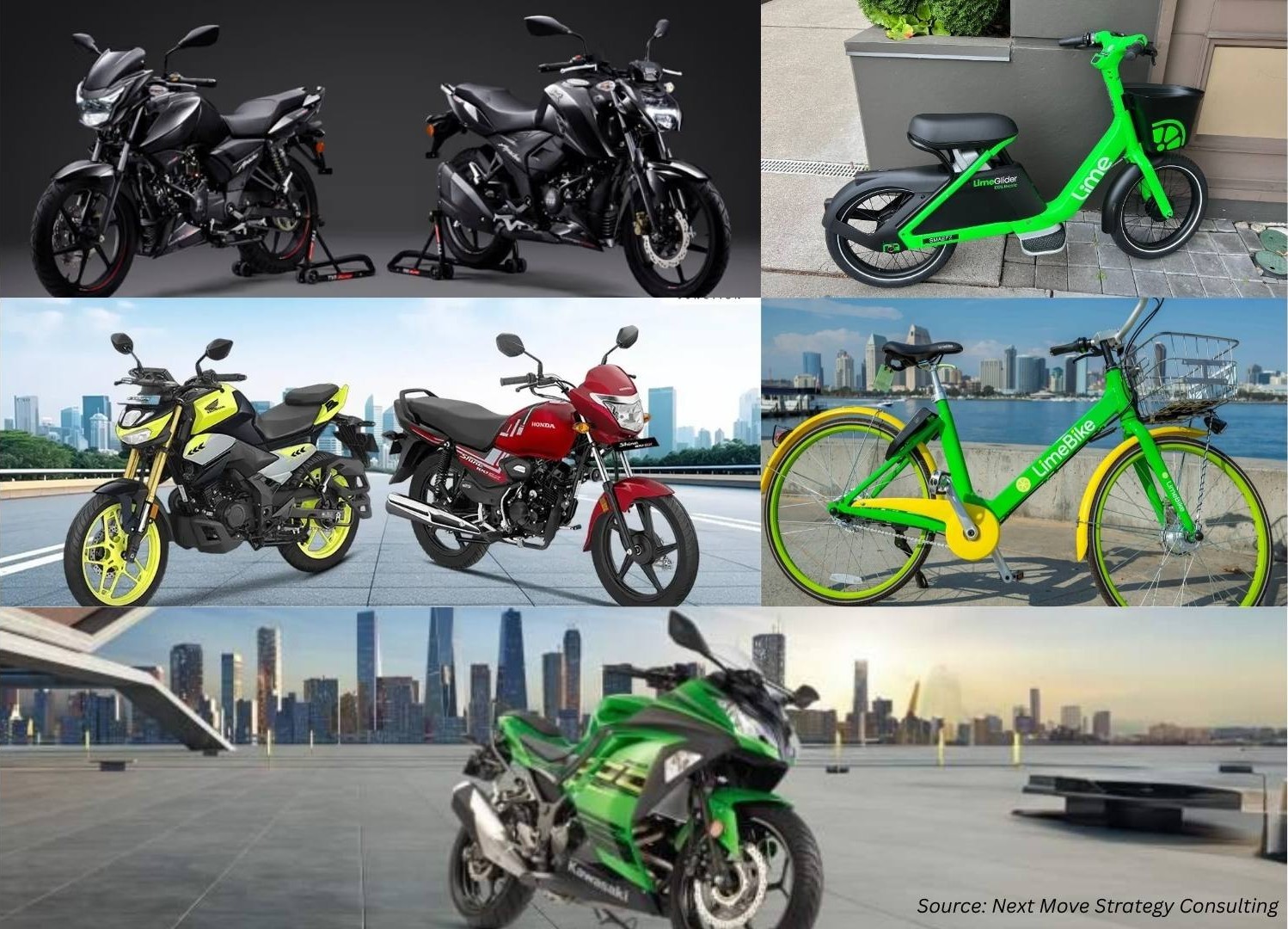
Forklift Truck Market by Product, (Motor Rider Trucks (counterbalance), Narrow Aisle Trucks, Motor Hand/hand-rider Trucks, Rough-terrain & Telehandlers, High-capacity/port & Terminal Equipment,Rough-terrain & Telehandlers, Specialized Handling Trucks), by Power Source, (Electric Forklifts, Internal Combustion Engine (ice) Forklifts), by Load Capacity, (Below 2 Tons, 2-5 Tons, 5-15 Tons, 15-36 Tons, Above 36 Tons) – Global Opportunity Analysis and Industry Forecast, 2024 – 2030
Industry: Automotive & Transportation | Publish Date: 08-Sep-2025 | No of Pages: 480 | No. of Tables: 758 | No. of Figures: 703 | Format: PDF | Report Code : AT59
Market Overview
The global Forklift Truck Market size was valued at USD 46.35 billion in 2023, and is predicted to reach USD 75.21 billion by 2030, with a CAGR of 7.0% from 2024 to 2030. Also, the forklift truck market size was 2476 thousand units in 2023, and is predicted to reach 4525 thousand units by 2030, with a CAGR of 8.5% from 2024 to 2030.
The forklift truck industry includes the design, manufacturing, and distribution of specialized industrial vehicles known as forklift trucks or lift trucks. These vehicles are essential material handling equipment utilized in various sectors, including manufacturing, logistics, warehouses, and distribution centers.
Forklift trucks are designed to lift, move, and stack materials, enhancing efficiency in the transportation and storage of goods within industrial settings. The industry involves the production of diverse types of forklifts, including counterbalance forklifts, reach trucks, pallet jacks, and order pickers, each tailored to specific material handling requirements.
Additionally, the forklift truck industry is influenced by technological advancements, safety regulations, and the evolving needs of industries relying on these vehicles for streamlined and effective material handling operations.
Growth of E-commerce and Online Retail Thrives the Market
The forklift truck industry is experiencing remarkable growth, driven by the burgeoning e-commerce boom. As online retail platforms flourish, the demand for efficient warehouse management and swift order fulfillment has surged.
Forklift trucks, with their lifting and maneuvering capabilities, have become indispensable in the dynamic landscape of distribution centers, serving as the backbone for seamless product movement within the supply chain. Their role is pivotal in enhancing operational efficiency, addressing the challenges posed by the diverse nature of products handled in e-commerce, from delicate electronics to bulky items.
The symbiotic relationship between the e-commerce boom and forklifts not only fuels the demand for these vehicles but also reshapes their utilization, transforming them from conventional tools to integral components in the precision-driven realm of e-commerce logistics. As the e-commerce industry continues to thrive, forklift trucks are set to play a key role in defining the future of material handling and supply chain management.
Increasing Demand for Efficient Material Handling Drives the Market
The escalating demand for efficient material handling solutions has become a focal point for businesses aiming to streamline their supply chains and enhance cost-effectiveness. Forklift trucks, standing as indispensable tools in this endeavor, are witnessing a surge in demand across diverse industries. Their versatility in moving and storing goods positions them as key players in the material handling landscape.
The allure lies not only in their traditional capabilities but also in their capacity to automate tasks, presenting an avenue for significant productivity improvements. As businesses seek to optimize their operations, forklift trucks emerge as a strategic investment, aligning with the overarching goal of achieving seamless and efficient material handling within the dynamic contexts of various industries.
High Initial Costs Pose a Significant Barrier for the Adoption of Forklift Trucks
The adoption of forklift trucks faces a considerable impediment in the form of high initial costs, which acts as a significant barrier to entry for businesses. The upfront investment required for the purchase of forklift trucks, along with associated costs such as installation, training, and maintenance, can be substantial. This financial commitment poses challenges, especially for small and medium-sized enterprises (SMEs) with limited capital resources.
The substantial initial costs may deter businesses from incorporating forklifts into their operations, hindering the potential benefits of enhanced material handling efficiency and productivity. Addressing these cost barriers is essential to encourage wider adoption of forklift trucks across diverse industries and ensure the realization of their advantages in streamlining logistics and warehouse management.
Introduction of AI-based Autonomous Forklift Trucks Creates Ample Opportunity
The introduction of AI-based autonomous forklift trucks revolutionizes material handling, offering opportunities for enhanced efficiency and productivity. These forklifts leverage artificial intelligence for autonomous navigation, recognizing locations, and optimizing travel routes.
This advancement aligns with the trend of increased automation, promising improved accuracy, reduced costs, and enhanced safety in logistics and warehousing. Recently, Toyota Material Handling Japan (TMHJ) launched an autonomous lift truck equipped with AI-based technology that autonomously identifies truck and load placement, generating automated travel routes for loading operations.
Developed through rigorous testing and enhancements since 2019, the system significantly reduces work time, with plans to expand the model lineup to include reach-type trucks. This innovation aligns with TMHJ's commitment to providing solutions that optimize safety, work efficiency, and cost for customers' logistics operations.
North America is Projected to Dominate the Forklift Truck Industry
The North America holds the predominant share in the forklift truck industry. This is attributed to the surge in advanced forklift truck investments in the U.S. can be attributed to their alignment with the overarching goals of enhancing efficiency, safety, compliance, sustainability, and overall operational excellence.
Recently, Mitsubishi Logisnext Americas launched the SCX N2 Series, a game-changing line of electric stand-up counterbalanced lift trucks designed for unmatched maneuverability, effortless multitasking, and enhanced agility in demanding warehouse environments.
Moreover, local companies are at the forefront of innovation in the forklift industry, introducing technologically advanced solutions that are driving market expansion. One notable example is Big Joe Forklifts' introduction of affordable autonomous forklifts, which is making automation more accessible to a wider range of businesses. This increased accessibility is leading to broader adoption of autonomous solutions across various industries, paving the way for a future of widespread automation in the forklift industry.
In addition, the expansion of forklift truck manufacturing companies in this region shows the growing demand for the market thus paving a positive future. As an example, Hangcha Forklift Canada expanded its business in Canada while enhancing support and training. Expansion plans to meet rising demand for electric products with advanced facilities.
Asia-Pacific to witness substantial growth in the market
Asia-Pacific is poised to witness the most rapid growth during the forecast period, fueled by a combination of economic expansion, industrial development, and robust manufacturing and logistics sectors. The region's rapid urbanization and infrastructure projects are further driving this growth. Driven by environmental concerns, leading regional companies are introducing eco-friendly forklift trucks, propelling market growth. Toyota Material Handling Japan (TMHJ) is at the forefront of this innovation, unveiling a fuel cell lift truck powered by Toyota MIRAI cells. This groundbreaking technology offers a 30% cost reduction, double the durability, zero CO2 emissions, and rapid refueling in just three minutes. TMHJ is also championing AI-powered autonomous lift trucks, enhancing safety and efficiency in loading operations. These advancements solidify TMHJ's position as a pioneer in shaping the future of logistics.
In addition, government initiatives supporting seamless logistics thrives the demand for the forklift truck market. Japan’s funding of a cargo handling forklift for Niue's Alofi sea port exemplifies this effort, strengthening Niue's distribution system and ensuring stable commodity logistics, showcasing Japan's ongoing support for the country.
Competitive Landscape
Various market players operating in the forklift truck market include Toyota Industries Corporation, KION Group AG, Jungheinrich AG, Mitsubishi Logisnext Co., Ltd, Crown Equipment Corporation, Hyster-Yale Materials Handling, Inc, Anhui Forklift (HELI), Hangcha Group Co., Ltd, Doosan Industrial Vehicle, Komatsu Ltd, Clark Material Handling Company, Hyundai Material Handling, Lonking Holdings Limited, EP Equipment Co., Ltd, Combilift Ltd. These market players are adopting strategies such as product launches across various regions to maintain their dominance in the forklift truck market.
For instance, in May 2023, Toyota launched a new electric forklift designed for versatile outdoor use in diverse terrains. Ranging from 3,000 to 7,000 lb., these models prioritize safety with advanced stability systems, embodying Toyota's commitment to continuous improvement.
Moreover, in October 2022, Mitsubishi Logisnext Americas Group introduced a 5-year powertrain warranty for Jungheinrich Class I and II warehouse products, covering motor, drive axle, and controller components, standardizing across the United States, Canada, and Mexico.
Forklift Truck Market Key Segments
By Product
-
Motor Rider Trucks (Counterbalance)
-
Narrow Aisle Trucks
-
Motor Hand/Hand-Rider Trucks
-
Rough-Terrain & Telehandlers
-
High-Capacity/Port & Terminal Equipment
-
Rough-Terrain & Telehandlers
-
Specialized Handling Trucks
By Power Source
-
Electric Forklifts
-
Lead-acid Battery
-
Lithium-ion Battery
-
Fuel Cell/Hydrogen-powered
-
-
Internal Combustion Engine (ICE) Forklifts
-
Diesel
-
Gasoline/Petrol
-
LPG/CNG
-
By Load Capacity
-
Below 2 Tons
-
2-5 Tons
-
5-15 Tons
-
15-36 Tons
-
Above 36 Tons
By Operation Type
-
Manual
-
Autonomous
By Tire Type
-
Cushion
-
Pneumatic
By End-user Industry
-
Manufacturing & Industrial
-
Warehousing & Logistics
-
Retail & E-commerce
-
Food & Beverage
-
Automotive
-
Construction
-
Chemical & Petrochemical
-
Paper & Wood Products
-
Ports & Shipping
By Region
-
North America
-
The U.S.
-
Canada
-
Mexico
-
-
Europe
-
The UK
-
Germany
-
France
-
Italy
-
Spain
-
Denmark
-
Netherlands
-
Finland
-
Sweden
-
Norway
-
Russia
-
Rest of Europe
-
-
Asia-Pacific
-
China
-
Japan
-
India
-
South Korea
-
Australia
-
Indonesia
-
Singapore
-
Taiwan
-
Thailand
-
Rest of Asia-Pacific
-
-
RoW
-
Latin America
-
Middle East
-
Africa
-
Key Players
-
Toyota Industries Corporation
-
KION Group AG
-
Jungheinrich AG
-
Mitsubishi Logisnext Co., Ltd.
-
Crown Equipment Corporation
-
Hyster-Yale Materials Handling, Inc.
-
Anhui Forklift (HELI)
-
Hangcha Group Co., Ltd.
-
Doosan Industrial Vehicle
-
Komatsu Ltd.
-
Clark Material Handling Company
-
Hyundai Material Handling
-
Lonking Holdings Limited
-
EP Equipment Co., Ltd.
-
Combilift Ltd.
REPORT SCOPE AND SEGMENTATION:
|
Parameters |
Details |
|
Market Size in 2023 |
USD 46.35 Billion |
|
Revenue Forecast in 2030 |
USD 75.21 Billion |
|
Growth Rate |
CAGR of 7.0% from 2024 to 2030 |
|
Market Volumes in 2023 (000’ units) |
2476 |
|
Volumes Forecast in 2030 (000’ units) |
4525 |
|
Growth Rate |
CAGR of 8.5% from 2024 to 2030 |
|
Analysis Period |
2023–2030 |
|
Base Year Considered |
2023 |
|
Forecast Period |
2024–2030 |
|
Market Size Estimation |
Billion (USD)/Thousand Units |
|
Growth Factors |
|
|
Countries Covered |
21 |
|
Companies Profiled |
15 |
|
Market Share |
Available for 10 companies |
|
Customization Scope |
Free customization (equivalent to up to 80 working hours of analysts) after purchase. Addition or alteration to country, regional, and segment scope. |
|
Pricing and Purchase Options |
Avail customized purchase options to meet your exact research needs. |

















 Speak to Our Analyst
Speak to Our Analyst

























